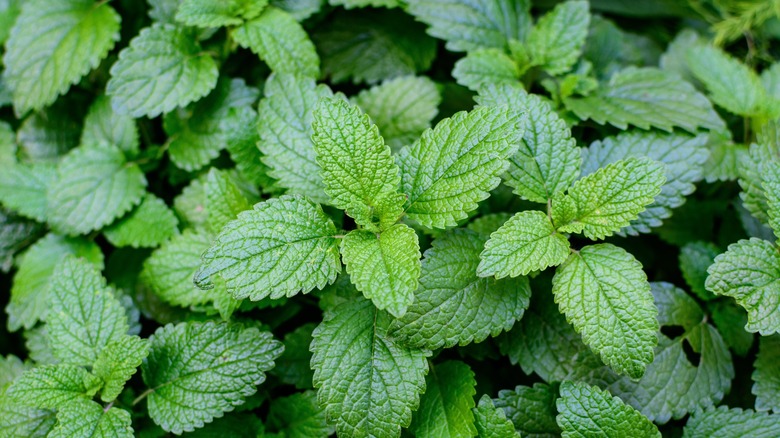Grow Taller, Healthier Mint With A Gardening Hack That Doesn't Cost A Thing
What if the secret to growing healthy mint (Mentha spp.) was already in your backyard, and completely free? Mint is easy to grow, but it can quickly become bushy and sprawl outward, especially as it becomes top-heavy. While store-bought cages and stakes are common tools to help with taller growth, there's a free and effective alternative right in your backyard: fallen branches that create a support structure for the plant. This clever, no-cost support method helps mint grow in a tidy and vertical shape.
To set it up, collect firm yet flexible twigs. These could be from willow, dogwood, or young maple trees. These types of branches bend easily without breaking, making them perfect for crafting a makeshift support. You'll need about five to seven twigs, each long enough to surround your plant. Push each stick a few inches into the soil around the mint, angling it slightly inward. Tie the tops loosely with twine to form a dome-shaped cage. This acts like a natural cage that guides the plant upward.
Upright growth is particularly helpful in containers or smaller garden spaces, where it's easy for plants to become crowded. And if you live in a colder climate, getting your mint to grow tall and strong before the season ends can give it a better shot at surviving the winter. Tips on winter care for mint include trimming back the plant, applying mulch to insulate the roots, and harvesting the remaining leaves ahead of expected frost to ensure a usable crop.
Use your branch support structure in a container for mint
Mint spreads aggressively through underground rhizomes, making it invasive in garden beds. Cages or twig supports won't stop this creeping behavior. Therefore, growing mint in containers is the best way to prevent it from taking over your garden. A pot that's 12 to 16 inches wide with proper drainage restricts its roots while giving it room to flourish.
Set your container in a spot that gets partial to full sunlight. Mint likes consistent moisture, so water it regularly, but avoid letting the soil get soggy. Trimming top growth every few weeks will keep your mint bushy and neat, especially with your twig support guiding its shape. If your plant still shows signs of stress, you can revive a dying mint plant by checking for signs of overwatering or too much direct sunlight. If your plant starts yellowing or shows signs of rust fungus, it's best to remove it entirely and replant it in fresh soil to avoid lingering spores.
Cold-climate gardeners may find spearmint (Mentha spicata) especially resilient through winter. And if you're growing mint alongside other herbs or vegetables, look into which companion plants work best with mint to enhance both flavor and pest resistance. This backyard-branch trick is an easy, elegant way to train your mint while keeping your herb garden in order.
